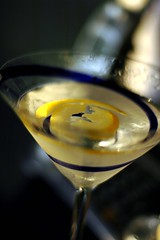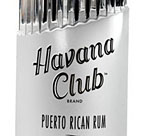On classic cocktails
Next Friday marks the 75th anniversary of the repeal of US Prohibition, a day that will be celebrated with the downing of a significant number of old-school cocktails. It's just got to be done. After all, FDR headed straight to the liquor cabinet on signing off on the 21st Amendment. I'd guess that the cocktailblog community is going to have some cool things lined up to commemorate the anniversary. These things don't happen every day, and I'm no exception. I've been spending some time looking at some of the great cocktails created outside of the USA during the dry years, but that's a tale for another day.
Next Friday's looking good, I reckon.
Anyway, the thing is this: what are the great modern cocktails?
There's a fairly nebulous group of mixed drinks that are referred to as "classics". Some are more or less undisputed - martini, Manhattan, Old-Fashioned, Daiquiri, for example, and some are kinda borderline - the Aviation? (Yes, if you're from the States, maybe not if you're British.) Off the top of my head, I can't think of any bona fide, nailed-on classics that date from after World War 2.
Taking 1948 (the first publication of Embury's Fine Art of Mixing Drinks) as the cut-off, what are the great modern cocktails?
I see two major problems. The first is the idea that Embury came up with, that all cocktails come back to six essential drinks. Well, five, and the Jack Rose. If that's true, then barring minor variations, everything's already been done. The second is the 1980s, which was as good a decade for mixology as 1666 was for London.
OK, just to be contrary - to counter the first problem, a truly great drink should transcend its formula. There is only one point of difference between a martini and a Manhattan, yet they're both considered classics in their own right. To counter the second, I just need to find a genuinely excellent cocktail that was invented about the time disco was considered acceptable to play out loud in public.
Here's a clue: it's not Sex On The Beach.
So, the question remains. Oh God, I feel a Workshop series coming on...



